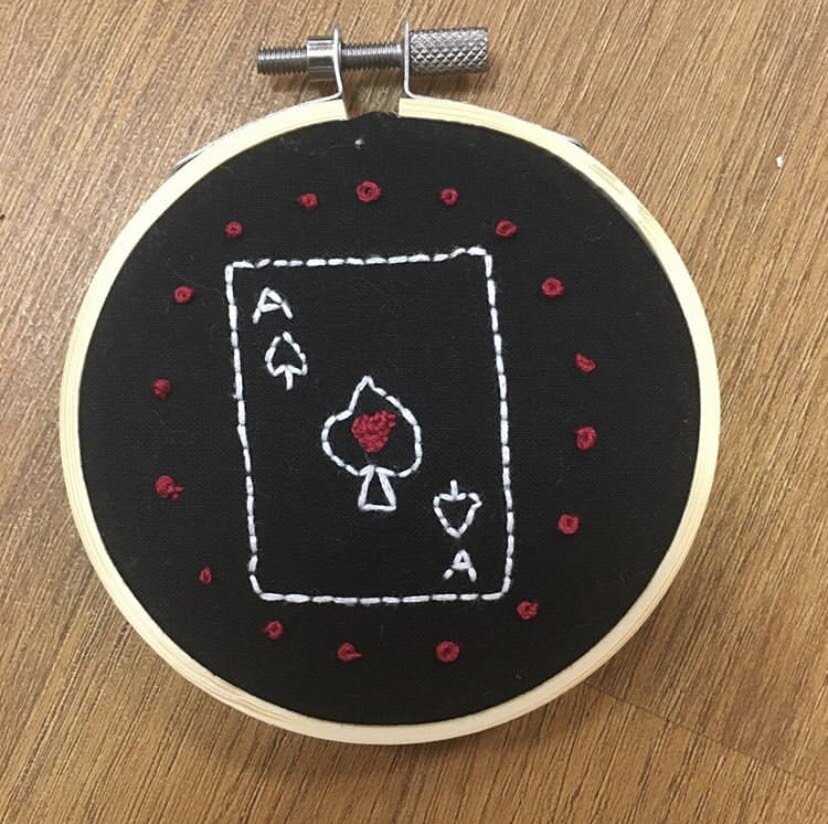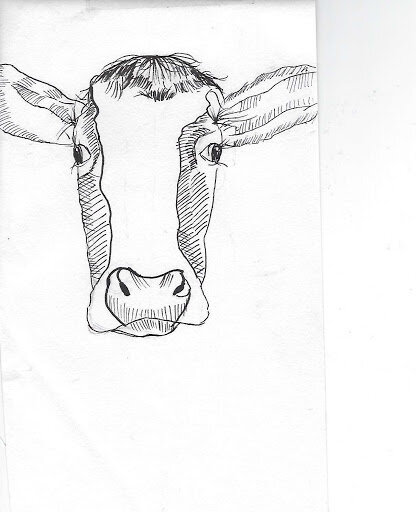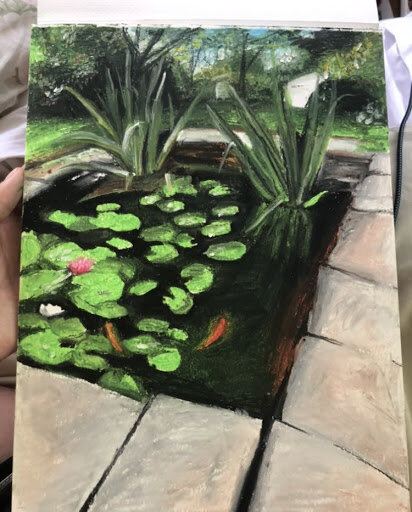Photo by Ava Provolo ‘22
By Woodlief McCabe ’23
Staff Writer
Without the ease of dining halls and takeout, Mount Holyoke students have found themselves more responsible for their own meals than ever during the pandemic. Restaurant prices and the additional fees of food delivery services have pushed many students to start cooking for themselves.
Tsela Zoksang ’24 started cooking for herself when she moved out of her parents’ house and into an apartment with a roommate. As a first-year, she has been navigating living alone without the buffer of a dorm experience. At first, she was making instant ramen and ordering takeout, but it started to add up. She realized, “Spending a lot of money on a whole bunch of groceries is probably financially unwise when I could just spend $2 here and there on little things.”
However, Zoksang added, “When you have that every day, like two or three times a day, it ends up getting to be way too much. I didn't want to be spending money so recklessly.”
Grocery shopping is a very daunting task for Zoksang. She said that she is able to avoid vegetables and other perishables going bad before she could use them by making large batches of each recipe. “When you make a lot of one thing, you can just leave the leftovers in the fridge, and it will last a long time if you make a lot of it,” she said. This doesn’t mean eating the same thing all week, she clarified.
Aside from being financially beneficial and time-saving, making food provides much-needed downtime. “Cooking is a pretty stress-relieving experience,” she added.
Other students, like Anna Chait ’23, have been cooking since March, when they went back home after campus closed. Chait said, “I started cooking at this time in my life out of force by the pandemic, but honestly, it’s good because cooking is so important and I had been wanting to get into it for years.”
Although for some students cook for themselves only temporarily in college, it can become a lifelong skill. “Cooking has given me a new life skill, and it has let me get more creative with my dishes,” Chait said. “Also, cooking has helped me to achieve a healthier and cheaper eating lifestyle.”
Zoksang spoke about “pockets of control,” a concept which explains ways we can find more peace of mind by creating habits and routines. It doesn’t have to be complicated, “working out or whatever it may be, reading a book a certain time in the day, just one or two things to bring a little more consistency to your life and make you feel like you’re in charge,” Zoksang said. For many students who have lost the consistency of simply leaving the house for class, making meals is a good way to reclaim a sense of time and purpose.
Ava Provolo ’22, who has also been cooking since March, said that she has gained more than just cooking skills and a renewed sense of routine. “I’ve learned my strengths, how to be creative, the importance of food as being joyful. I love making homemade bread and making meals around that,” Provolo said. “Seeing people’s faces when I give them a meal or a platter of something sweet is a great moment.”
Jaia Colognese ’22 has had a love of cooking since childhood when she spent time at her parents’ Italian bakery in Rhode Island. “My parents have instilled in me an appreciation for food that is homemade and handmade,” she said. “I was taught to cook by example, mostly from watching my parents cook dinner together every night.”
Cooking is a passion that she has gotten even closer to these past several months. “I spend hours in the kitchen inventing recipes or modifying ones that I come across,” she said. She finds joy in both the process and the end result. To Colognese, sharing her food “is the best part of cooking.”
Still, as a college student, the recipes she inherited from her family are not always as doable as she would hope. “I grew up in a household that uses the freshest, highest-quality ingredients,” she explained. “If I want to replicate these authentic dishes that my parents and grandparents make, then I need to use these same ingredients, which are often much more expensive.”
Her lifelong love of cooking has taught her as much. “I've learned that there’s a huge difference between fresh basil and dried, fresh versus canned tomatoes, ripe fruit versus supermarket-ripe fruit, and so on,” she said. “High-quality cheese, fruit, vegetables and meat are definitely a barrier for a student, but I try to use these ingredients because it improves the taste of the food significantly.”
While the pandemic has separated many from their loved ones, mealtimes are still one of the best ways to connect with others. For some, the pandemic has brought opportunities to make these times even more personal. “Cooking and baking are my love language[s],” Provolo said. She has been experimenting with her own veggie burger recipes.
Chait has been making all sorts of pescatarian meals and other meatless dishes for her partner, as well as baking, which she says has been a pastime of hers since before the pandemic. Provolo is also baking, preparing for a “12 type [of] cookie marathon” come December, as well as making a fudge and chocolate cake.
Despite the physical distance, some students, like Zoksang, are connecting to their families through recipes. Zoksang thinks of her father when she cooks. Her father fled Tibet to a refugee school in India where he wasn’t able to cook for himself.
“Once he actually had the resources to start cooking, he always loved to,” she explained. “In Tibetan culture, cooking and having family time for eating and drinking tea together is a big deal, and so he’s always cooked much more … than my mom did. And I always liked to help him as a kid. We’d make what’s called momo, which is like dumplings.”
Provolo, who has Italian roots, also recognized the great familial bond that cooking can bring. “Food connects my family together every day at supper,” she said. “I also learned a lot about how to cook from my grandmother, who has shown me most importantly how to put love into food.”
The way we feed ourselves can help us find routine in the chaotic lives we have been thrown into. We can have time to think about loved ones far away and show our appreciation for the ones we have the fortune to be close to. If you aren’t cooking with your family, friends or partner in the room, the things we add to the food and the people we share it with can still bring the warmth of a shared meal.
Cooking is an incredibly meditative and productive act in a way that few others are. It also opens up room for creativity through experimentation with new ingredients and ideas. We can make mistakes and burn our food and spill everything and make huge messes. We will never not need to have meals, so why not take the time to create joy and warmth when we can?
Food is filling, but cooking has the power to be fulfilling.
• Anna Chait — Pumpkin Cookies
Ingredients
For cookies:
1 cup butter, softened
2/3 cup packed brown sugar
1/3 cup granulated sugar
1 egg
1-1 ½ teaspoons vanilla extract
1 cup canned pumpkin
2 cups flour
1 ½-2 teaspoons of cinnamon
1 teaspoon baking soda
½ teaspoon salt
¼ teaspoon baking powder
Walnuts (optional)
For frosting:
¼ cup butter
4 ounces cream cheese
2 cups confectioner’s sugar
1 ½-2 teaspoons vanilla extract
Tip: I usually add 2 teaspoons of vanilla extract (especially if using imitation vanilla extract). Also, if you need more frosting but don’t want to double the recipe, you can just add more confectioner’s sugar!
Instructions
Preheat the oven to 350 F. In a large bowl, cream butter and sugars until light and fluffy. Beat in egg and vanilla. Add pumpkin; mix well. In a separate bowl, combine the flour, cinnamon, baking soda, salt and baking powder; gradually add to the creamed mixture and mix well. Drop by rounded tablespoonfuls 2 inches apart onto greased baking sheets. Bake for 8-10 minutes or until edges are lightly browned. Cool completely. In a small bowl, beat the frosting ingredients until light and fluffy. Frost cookies and store in an airtight container in the refrigerator.
• Tesla Zoksang — Jigae (Korean Stew)
(Meat can be substituted for tofu or anything else.)
Serves 2-4
Ingredients
1 medium potato, peeled and cut into ½-inch cubes (about 1 cup)
1 medium onion, cut into ½-inch pieces (about 1 cup)
1 small zucchini, cut into ½-inch pieces (about 1 cup)
1 green Korean chili pepper (cheong-gochu), stemmed and chopped
4 garlic cloves, minced
4 large shrimp, shelled, deveined, washed and coarsely chopped (about ⅓ cup)
2 ½ cups water
7 dried anchovies, guts removed
5 tablespoons fermented soybean paste (doenjang)
6 ounces medium-firm tofu, cut into ½-inch cubes (about 1 cup)
2 green onions, chopped
Homemade doenjang (집된장)
Instructions
Combine the potato, onion, zucchini, chili pepper, garlic and shrimp in a 1½-quart (6 cups) earthenware pot or other heavy pot. Wrap the dried anchovies in cheesecloth (or a dashi bag, a pouch for stock-making sold at Korean grocery stores) and put them into the pot with other ingredients. Add water and cover.
Cook over medium-high heat for 15 minutes or until it starts boiling. If you use a stainless steel pot, it will take less than 15 minutes, about 7 to 8 minutes.
Stir in the soybean paste, mixing well. Cover and cook for 20 minutes longer over medium heat.
Add the tofu and cook for another 3 minutes. Remove the anchovy pouch and discard.
Sprinkle with the green onions and serve as a side dish to rice. Serve it directly from the pot or transfer to a serving bowl. Everybody can eat together out of the pot or portions can be ladled out into individual bowls for each person.
To Zoksang, the most important ingredients are the condiments, like the spices and pastes. That way you can keep your cooking interesting and new without spending a ton of money. She finds the pastes for her Korean cooking at H-Mart, an Asian grocery store near her apartment in Manhattan.
• Jaia Colognese — Blue Cheese Steak with Cracked Black Pepper
(Serves 2)
Ingredients
2 high-quality (preferably local) ribeye or New York strip steaks
¼ pound of blue cheese, such as Cambozola
3 tablespoons room temperature butter
1 teaspoon finely chopped chives (optional)
2 teaspoons freshly cracked black pepper (or to taste)
2 teaspoons finely minced garlic
Instructions
Preheat your grill or prepare a cast iron pan for cooking. Pat the steaks dry, cover with a light salt/pepper rub and allow them to sit for about 10 minutes. In the meantime, prepare the butter. Mix room temperature butter with cheese, garlic, chives and black pepper. Set aside for later.
Cook the steaks to your liking, allowing them to rest for about 5 minutes once removed from heat. Plate the steaks, slathering them in blue cheese spread.
Sides to enjoy this with:
Caramelized onions and brussel sprouts
Balsamic-glazed carrots
Oven-roasted potatoes




















